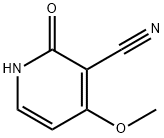PRODUCT Properties
| Melting point: | 201.5° |
| Boiling point: | 291.62°C (rough estimate) |
| Density | 1.2739 (rough estimate) |
| refractive index | 1.6000 (estimate) |
| Flash point: | 2℃ |
| storage temp. | -20°C |
| solubility | DMSO: slightly soluble,Methanol: slightly soluble |
| form | A solid |
| pka | -4.93±0.62(Predicted) |
| Water Solubility | 2.7g/L(10 ºC) |
| CAS DataBase Reference | 524-40-3 |
Description and Uses
First isolated by Tuson from the seeds of Ricinus communis (castor-oil seed), the alkaloid was subsequently examined by Soave, Schultze and Evans. The base crystallizes from H20 in colourless prisms or leaflets and sublimes at 170-lS0°C/ 20 mm. It is soluble in hot H20 or CHCI3, only sparingly so in EtOH and insoluble in petroleum ether, is neutral in reaction, optically inactive and forms no normal salts although the mercurichloride, m.p. 204°C has been prepared. The alkaloid reduces KMn04 and may be hydrolyzed by alkalies to MeOH and ricininic acid which forms brilliant, slender needles, m.p. 296-8°C (dec.). The structure of ricinine has been confirmed by synthesis from 4-chloroquinoline. Other syntheses have also been achieved. The base is not particularly toxic and the poisonous character of castor-oil seeds has been shown to be due to a more complex substance, ricin, the toxicity of which may be destroyed by heating.
Ricinine is an alkaloid extract from the seeds of the castor-oil plant (Ricinus communalis). Ricinine is a central nervous system stimulant that could potentially be a cognition-enhancing agent used for the treatment of human amnesias. Ricinine also has bactericidal effects on three pests and heptaprotective activity.
Safety
| Symbol(GHS) |  GHS06 |
| Signal word | Danger |
| Hazard statements | H301 |
| Precautionary statements | P301+P310 |
| Hazard Codes | T,Xn,F |
| Risk Statements | 25-36-20/21/22-11 |
| Safety Statements | 45-36/37-16 |
| RIDADR | UN 2811 6.1 / PGIII |
| WGK Germany | 3 |
| RTECS | QT3100000 |





